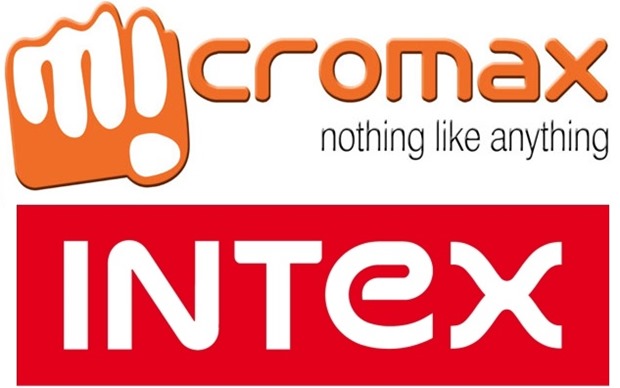After landing in controversy in year 2015 over patent infringement, Xiaomi, was asked to stop the sale of some of its handsets by the Delhi High Court-

Sony Ericsson VS Xiomi
After landing in controversy in year 2015 over patent infringement, Chinese handset maker Xiaomi, which was asked to stop the sale of some of its handsets by the Delhi High Court, has been allowed to send back its Redmi Note 3G handsets to Hong Kong.
According to a PTI report on Tuesday, a vacation Bench of high court judge Mukta Gupta permitted Xiaomi to return over 100,000 handsets to their point of origin, Hong Kong, after Swedish telecom firm "Telefonaktiebolaget LM Ericsson" agreed to the arrangement.
In December 2014, the court had barred Xiaomi from selling or importing phones into India, after a complaint from Ericsson alleging patent infringement. The move was seen as having dealt a severe blow to Xiaomi’s prospects in what was considered its most important international growth market.
Xiaomi, though, got a reprieve in a second ruling, which stated the company was forbidden only from importing and selling phones containing components linked to the Ericsson dispute. This referred specifically to parts made by MediaTek, a Taiwanese chipmaker.
The court had directed Xiaomi to maintain an inventory of handsets, currently lying unused with e-commerce site Flipkart, through which the Chinese company sells its phones under an exclusive arrangement.
Read more about the news: https://economictimes.indiatimes.com/tech/hardware/delhi-hc-directs-xiaomi-to-stop-import-sale-of-phones-over-patent-case-by-ericsson/articleshow/45461386.cms
 |
- What was the fuss about?
According to Ericsson, Xiaomi needed a licence from Ericsson for selling and marketing the phones imported to India and using Ericsson’s patents.Ericsson alleged standard essential patents (SEPs) used in AMR, 2G, 3G and Edge technologies for mobile phones were being infringed upon by Xiaomi.
An SEP is the patent for the core technology essential to create something of a particular technical standard. In this case, mobile phones cannot be made without the GSM, GPRS, EDGE and WCDMA technology, which are patented by Ericsson.
Xiaomi apparently uses 3G- and EDGE-compliant technologies on its smartphones in India. Ericsson said it had several patents on these connectivity standards, and that the Chinese manufacturer was required to acquire licences for those or pay royalties.
GSM arens's article about the fuss- https://www.gsmarena.com/newscomm-10445.php
 |
| The network bands which where the original reason of conflict |
The Delhi High Court was satisfied that Ericsson had made out a prima facie case for grant of ad interim injunction in its favour, and directed Xiaomi to stop sale of all its handsets/devices in India.
Xiaomi in its appeal against the injunction alleged that Ericsson, while obtaining the ex parte injunction order, did not inform the court that Xiaomi also made, imported and sold handsets having Qualcomm chipsets. It contended that it did not infringe Ericsson’s patents, as Qualcomm had obtained a licence from the Swedish company for this patented technology.
This implied that Xiaomi would be unable to sell 3G-variant of the Redmi Note (which features a MediaTek chipset) in India, while the Redmi Note 4G and all other sets running on Qualcomm-based chips would still be sold.
Eventually, the court on December 16, 2015 permitted Xiaomi to sell its Qualcomm chipset-based devices as a ‘pro tem’ (temporary) measure till the issue of patent infringement was heard and decided by a single-judge Bench of the high court.
Xiaomi can now sell other devices in India apart from the ones that feature Media Tek chipsets. Thus, from now, Xiaomi phones working on Qualcomm chipsets will be available for customers in India.
Redmi 1S, Mi 3, Mi 4 and Mi 4i, fitted with Qualcomm chips, are very popular Xiaomi handsets.
Ericsson and its patent woes in India:
Xiaomi is not the only one with which Ericsson has been fighting patent battles. Earlier, the Swedish company had filed similar legal suits against domestic vendors like Micromax, Intex and Gionee, over infringement of patents pertaining to 2G and 3G wireless technologies.Ericsson first sued Micromax and was able to obtain an ex parte injunction (ex parte means without even hearing the other side) against Micromax. Ericsson then demanded a huge royalty fee and the court asked Micromax to deposit the fees (royalty of close to two per cent) in court. Micromax deposited almost Rs 400 crore in court, despite challenging the validity of the patent.
 |
| Both smartphones also had such conflicts with Sony Ericsson |
Micromax alleged Ericsson was being opaque about its other licensing arrangements where it demanded a lower licence fee. The court then ordered Ericsson to produce these licenses and upon finding lower rates, ordered Micromax to pay a much lower percentage of sales as royalty (0.8 per cent to 1.25 per cent). But even this is is not too low, considering the fact that royalties are being paid on the entire phone sales and not just the chip component.
As for Intex, which was also taken to court by Ericsson, the Indian company filed a caveat in the court, so Ericsson couldn’t obtain an ex parte injunction. The matter is still pending and both parties have now finished their arguments in court and are awaiting a ruling
Read the whole article: https://www.thequint.com/tech-and-auto/tech-news/all-you-want-to-know-about-the-ericsson-micromax-patent-dispute-intex-intellectual-property-rights-make-in-indiaAt the end i want to conclude that these unethical practices by Xiomi, Micromax, and Intex are delivering very bad impact in the tech world. And spoiling there images and brand value in the market. Though, Sony Ericsson is now vanished from the market but it has clean and clear image in market. It only went into the loses because of its old design and software. And then again came in the market as Sony Xperia.

Interesting one.
ReplyDeleteThank you for showing interest in my blog Manav.
DeleteNice n interesting one
ReplyDeleteThank you very much Bhumika.
DeleteVery informative blog
ReplyDeleteThanks for the appreciation Parth
DeleteYou write commendable blogs👌
ReplyDeleteThank you for continues reading my blogs. Hope u will like next one too
DeleteCompletely agree and your concern should be escalated. Excellent work Abhay👍
ReplyDeleteThank you Anshika for appreciating my work. Yes it will be escalated
DeleteGreat efforts.
ReplyDeleteThank you Siddhant
DeleteVery Informative, got to know a lot about the undisclosed side of the company. Keep it up.
ReplyDeleteYes, these big corporate have many undisclosed sides. Thank you Vishu
DeleteVery well written. Amazed to see these big big companies do such frauds.
ReplyDeleteThank you Aarushi. Yes these big giants also do such frauds
DeleteVery informative. Keep going Abhay
ReplyDeleteThank you very much
DeleteGood content
ReplyDeleteThanks Junaid
DeleteNice work Abhay 👍
ReplyDelete